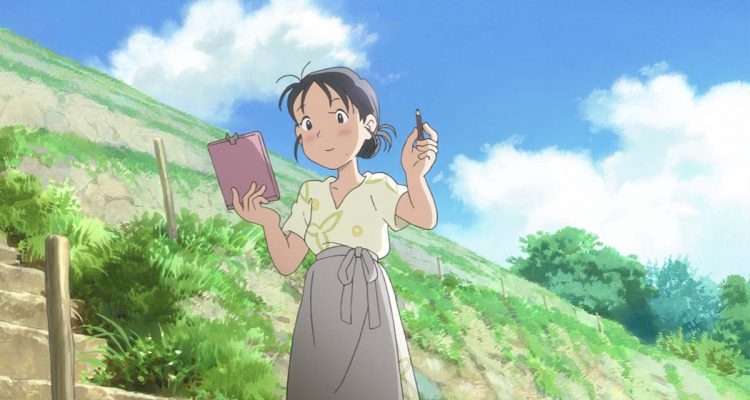IN THIS CORNER OF THE WORLD (Japan/12A/129 mins)
Directed by Sunao Katabuchi. Starring Non, Yoshimasa Hosoya, Megumi Han, Natsuki Inaba, Nanase Iwai.
THE PLOT: Beginning in 1933, the film charts the life of a young girl in wartime Japan over the course of 13 years. Suzu (Non) is a wide-eyed, innocent girl still trying to understand the world she lives in. Hiroshima is home to her, but when she reaches adulthood she’s sent away to neighbouring Kure. There, a marriage has been arranged with local naval clerk Shusaku (Yoshimasa Hosoya). He’s not the most loving of husbands, but they soon come to rely upon each other. Suzu lives with Shusaku in his family’s home and becomes a key part of the family, even if they laugh at her clumsiness and naiveté. When war comes to Kure, Suzu learns to survive despite rationing, air raids and the risk of imminent loss…
THE VERDICT: Adapted by Sunao Katabuchi from the manga series of novels by Fumiyo Kono, ‘In This Corner Of The World’ is another typically accomplished anime from Japan. Though not made by the illustrious Studio Ghibli, shades of their work can be found here, most notably ‘Grave Of The Fireflies’. That’s not to say that the film is all doom and gloom. If anything, it stays firmly upbeat and hopeful throughout.
At its core, it’s a coming-of-age drama built around a lovely lead character. As a visiting childhood friend tells Suzu, she’s surprisingly ordinary and content as a young housewife. That ordinariness is the key to the character and hence the film. It’s a simple story about an ordinary young woman living through extraordinary times. War becomes an everyday fact, but that doesn’t affect Suzu’s spirit. Director Katabuchi wisely keeps his focus firmly on Suzu throughout, seeing what happens to her new home and family through her eyes rather than digress on the nature of war. It’s enough to show a flash of light and a mushrooming cloud for the atomic bombing of Hiroshima. Suggestion has a far greater emotional power.
While this story could work on a basic level in live action form, the anime style is more effective and artistic. Katabuchi uses the animation to suggest the beautiful in the ugly, like Suzu imagining explosions as colourful splotches of paint in the sky. It’s a way for Suzu to remain grounded, as we follow her journey. It becomes quite riveting to watch, as we hope that Suzu will make it through. There’s more light here than dark here. It’s quite a sweet and soulful film that never loses focus. Fans of Japanese animation will certainly want to seek it out.
RATING: 4 / 5
Review by Gareth O’Connor
Review by Gareth O'Connor
4
Sweet & Soulful


